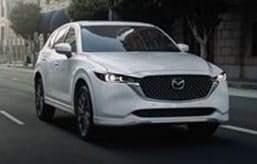- A new report shows prices of critical EV battery components are falling.
- Goldman Sachs predicts the cost of producing an EV and a comparable ICE vehicle could be the same by 2026.
- Facing demand and political pressure, EV manufacturers will likely pass the savings on to consumers.
Cheaper EVs Are Almost Here, For Real This Time
A new report shows prices for critical EV battery components are finally falling
A new report by Yahoo Finance explains that, due to falling lithium-ion battery component costs, your next new electric vehicle might cost as much as a comparable gasoline-powered vehicle. That would be great news for potential EV buyers, who cite a desire for inexpensive options as a major point-of-purchase consideration, according to a recent Edmunds survey.
The Yahoo Finance article details how lithium prices have fallen 70% this year. This has contributed to an EV battery's per-kilowatt-hour price dropping to $115, per Goldman Sachs — a reduction of roughly 23% compared to last year. The firm expects prices to drop another 20% in 2025.
As a result, customers are likely to see prices drop for new EVs over the next few years. There isn't always a one-to-one relationship between materials costs falling and a price reduction of manufactured goods, but a few related factors will likely push the manufacturer's suggested retail price downward.
For one, though electric vehicle sales are fairly strong, growth is starting to decline. We've seen drastic price cuts over the last couple of years as manufacturers struggle to match the curves of healthy supply and stagnant or suppressed demand. Even with tax credits and other incentives, EV prices remain too high for many people. Our survey shows 47% of prospective buyers want to buy an EV under the $40,000 mark. A separate examination of MSRPs of both internal combustion engine (or ICE) vehicles and electric vehicles shows that the only EV types with MSRPs that fall below or near the $40,000 point are subcompact SUVs and compact cars. (The only subcompact car listed — the Mini Electric Hardtop — has been discontinued since that article's publication.)
In contrast, the article shows buyers can secure a well-equipped compact SUV or midsize car for well under the $40,000 threshold. If the cost of producing EVs and ICE vehicles can achieve parity in the next few years (as Goldman analysts believe), and the savings are passed along to consumers, those EV buyers will be able to get a lot of bang for their buck in a few years' time.
Another reason savings might be passed onto the customer? Those tax credits and incentives we mentioned. Remember, federal tax credits for EVs and plug-in hybrids range from $3,750 to $7,500, and depend on where the battery is built and where its components are sourced. While popular with EV buyers, the federal tax credit could cost up to $2 billion this year, and there's an immense amount of political pressure from Republican lawmakers to do away with them. In an election year, a swing in political control could put those incentives in jeopardy. A fall in EV production costs without a requisite reduction in a new vehicle's MSRP would further increase calls to drop the federal incentives — using taxpayer money to subsidize corporate profits is a hard sell to the public, no matter which side of the aisle you fall on.
Edmunds says
The fall in battery costs is good news for EV automakers and — if those savings are passed on to the end consumer — the government and all Americans, whether you buy an EV or not.




 by
by  edited by
edited by